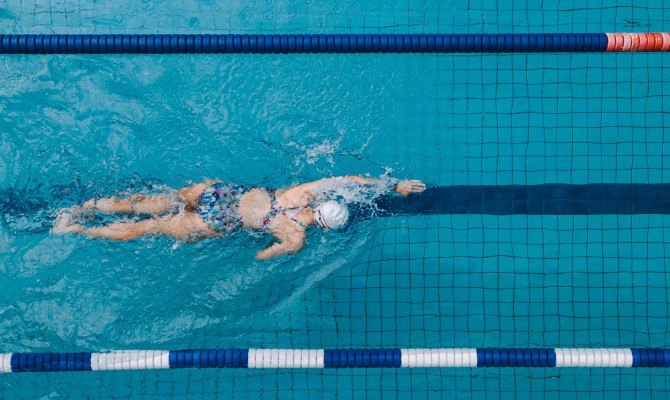Lower Back Care for Swimmers
13 Oct 2025

Don’t let back pain sink your swim
The pool is where swimmers feel most at home but for many, it’s also where back pain begins. The lower back (lumbar spine) takes on huge stress with every lap, especially in demanding strokes like butterfly and breaststroke. that demand powerful undulation and extension. Left unchecked, this strain can pull you out of training and keep you out of the water.
The good news? With the right mobility, strength, and control, you can protect your back and keep swimming strong.
Why do butterfly and breaststroke stress the lower back?
- Butterfly: The dolphin kick demands repeated hyperextension of the spine. Add in the explosive double-arm pull, and your lumbar spine ends up working overtime to stabilise and drive power.
- Breaststroke: The whip kick and body lift combine to compress and extend the lower back on every stroke. Over time, this can irritate the joints and muscles if your hips and core aren’t doing their share of the work.
Physio tips to protect your back
1. Unlock hip mobility
Tight hips = extra strain on your spine. If your hip flexors, hamstrings, or adductors are stiff, your lower back has to “pick up the slack” every time you kick. That’s when niggles start to creep in.
- Try this: Add dynamic hip openers before you swim (like leg swings or lunges with a twist), and stretch hip flexors and hamstrings after sessions.
- Why it works: Better hip mobility means your legs move more freely through each kick, keeping the power where it belongs.
2. Fire up your glutes
Your glutes are your secret weapon, they stabilise your pelvis, absorb force, and take pressure off your spine. If they’re lazy, your lower back ends up doing too much.
- Try this: Glute bridges, clamshells, banded monster walks are great activations before a session.
- Why it works: Strong, active glutes give you more propulsion off the wall and during kicks, while keeping your lower back happy.
3. Master spinal control
A strong, stable trunk is the difference between smooth, efficient strokes and a back that’s constantly straining. It’s not about six-pack abs, it’s about deep, stabilising muscles that hold your form under pressure.
- Try this: Dead bugs, bird-dogs, and plank variations that challenge you to resist unwanted movement.
- Why it works: When your core holds steady, your legs and arms can deliver more power without wasting energy or stressing your lumbar spine.
4. Balance your training
Back pain doesn’t just come from what happens in the pool. Hours hunched over laptops or phones can tighten hips and weaken postural muscles, setting you up for problems when you swim.
- Try this: Mix in mobility flows, resistance training, and recovery work to balance out pool time.
- Why it works: A stronger, well-rounded body can handle more time in the water with fewer aches.
Stay in the water, not on the sidelines
Back pain doesn’t have to be part of your swimming journey. By unlocking your hips, firing up your glutes, and training your core, you can protect your spine and unlock smoother, more powerful strokes., whether you’re chasing PBs, racing at club level, or swimming for fitness.
At Habit Health, our physiotherapists work with swimmers of all levels to address pain and injury build strength, and prevent setbacks. From individualised mobility plans to hands-on treatment, we’ll help you keep your training consistent and your back strong.
Book an appointment today and don’t let back pain sink your swim.